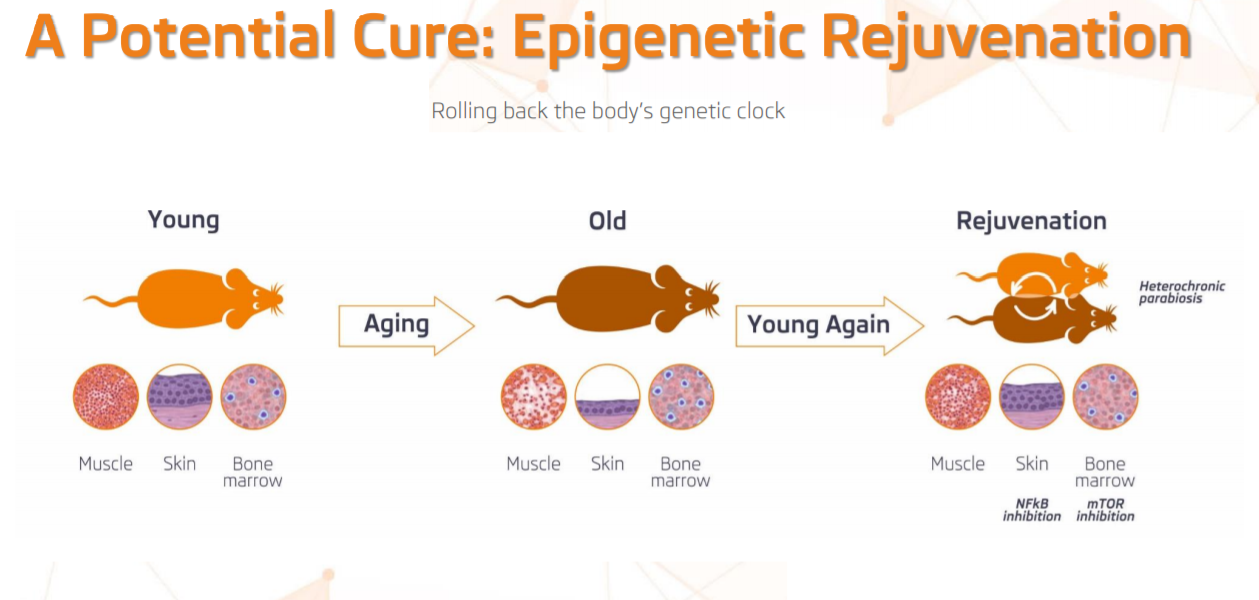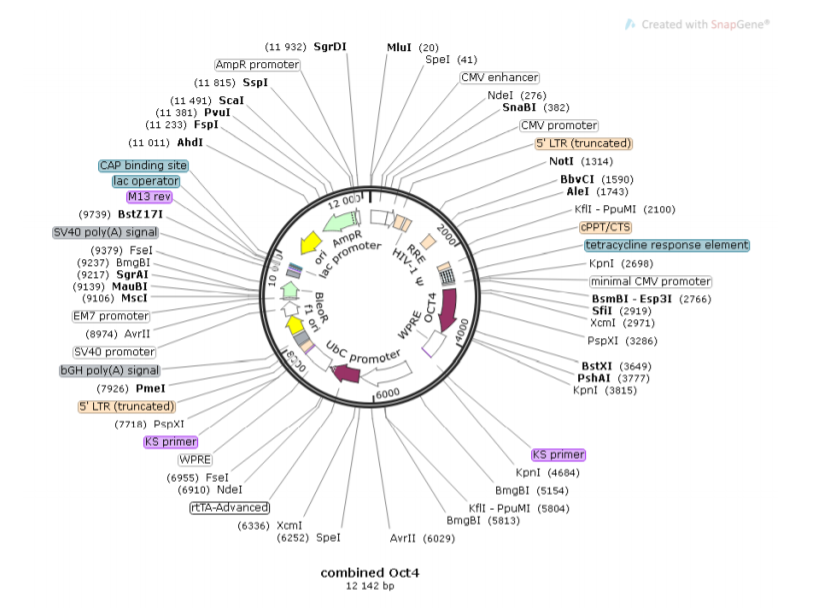Looking for partner or group for DIY TPE
Frank
Raph N
Great minds think alike, I'd love to test that, especially with an epigenetic age test to quantify the rejuvenation potential.
Where about are you?
I'm in the UK.
Raphael
Frank
Raphael Nicolle
--
-- You received this message because you are subscribed to the Google Groups DIYbio group. To post to this group, send email to diy...@googlegroups.com. To unsubscribe from this group, send email to diybio+un...@googlegroups.com. For more options, visit this group at https://groups.google.com/d/forum/diybio?hl=en
Learn more at www.diybio.org
---
You received this message because you are subscribed to a topic in the Google Groups "DIYbio" group.
To unsubscribe from this topic, visit https://groups.google.com/d/topic/diybio/tsN60rJ2rRA/unsubscribe.
To unsubscribe from this group and all its topics, send an email to diybio+un...@googlegroups.com.
To view this discussion on the web visit https://groups.google.com/d/msgid/diybio/32c87b6c-7946-4621-bafa-61c49fb1d330n%40googlegroups.com.
Gary Dale
Frank
Frank
Raphael Nicolle
--
-- You received this message because you are subscribed to the Google Groups DIYbio group. To post to this group, send email to diy...@googlegroups.com. To unsubscribe from this group, send email to diybio+un...@googlegroups.com. For more options, visit this group at https://groups.google.com/d/forum/diybio?hl=en
Learn more at www.diybio.org
---
You received this message because you are subscribed to a topic in the Google Groups "DIYbio" group.
To unsubscribe from this topic, visit https://groups.google.com/d/topic/diybio/tsN60rJ2rRA/unsubscribe.
To unsubscribe from this group and all its topics, send an email to diybio+un...@googlegroups.com.
To view this discussion on the web visit https://groups.google.com/d/msgid/diybio/88f00621-5fc5-4c43-9535-d3622322d465n%40googlegroups.com.
James Clement
Best regards,
James
Frank
Gary Dale
Frank Garcia
Raphael Nicolle
I don't know too much about the epigenetic tests however it might be useful for you to take a look at the biomarker tests that were used in the experiment that I posted which started this discussion. They did pretty rigorous testing of multiple systems and tissues to determine efficacy.
--
-- You received this message because you are subscribed to the Google Groups DIYbio group. To post to this group, send email to diy...@googlegroups.com. To unsubscribe from this group, send email to diybio+un...@googlegroups.com. For more options, visit this group at https://groups.google.com/d/forum/diybio?hl=en
Learn more at www.diybio.org
---
You received this message because you are subscribed to a topic in the Google Groups "DIYbio" group.
To unsubscribe from this topic, visit https://groups.google.com/d/topic/diybio/tsN60rJ2rRA/unsubscribe.
To unsubscribe from this group and all its topics, send an email to diybio+un...@googlegroups.com.
To view this discussion on the web visit https://groups.google.com/d/msgid/diybio/520005b7-42f5-4e53-8444-b08f15361563o%40googlegroups.com.
boj Ko


It's a long way to go, if anything! - Are you ready for it?
First you need to go through a synergistic detoxification for about 5-6 months, then go through the enrichment of a number of organs with new cells through stimulation systems and only then begin invasive measures to influence long lengths in complex ways. (Whiskey and almost all delicious food and not only will leave your life for 7 years) Otherwise, the results will stagnate)))) Are you ready for this))))
You received this message because you are subscribed to the Google Groups "DIYbio" group.
To unsubscribe from this group and stop receiving emails from it, send an email to diybio+un...@googlegroups.com.
To view this discussion on the web visit https://groups.google.com/d/msgid/diybio/CAEG5Az68wai3nF2uuQWVW6_nTyB%3DZ1weMrFRiFbf2sCRN78iKw%40mail.gmail.com.
Raphael Nicolle
To view this discussion on the web visit https://groups.google.com/d/msgid/diybio/CADiunFQq7zQONqZDYNz0RNdOTkFQDY8egQizSMkGJ7rjfk5Y4A%40mail.gmail.com.
James Clement
Cheers,
James
Raphael Nicolle
--
-- You received this message because you are subscribed to the Google Groups DIYbio group. To post to this group, send email to diy...@googlegroups.com. To unsubscribe from this group, send email to diybio+un...@googlegroups.com. For more options, visit this group at https://groups.google.com/d/forum/diybio?hl=en
Learn more at www.diybio.org
---
You received this message because you are subscribed to a topic in the Google Groups "DIYbio" group.
To unsubscribe from this topic, visit https://groups.google.com/d/topic/diybio/tsN60rJ2rRA/unsubscribe.
To unsubscribe from this group and all its topics, send an email to diybio+un...@googlegroups.com.
To view this discussion on the web visit https://groups.google.com/d/msgid/diybio/da0e38da-9a80-4f0d-a281-0209214e5265o%40googlegroups.com.
Frank Garcia
Frank Garcia
Frank Garcia
FYI: interesting aside on the commercial interest/viability of TPE. About 4 years ago I had a conversation with a medical student in California who just started a company called Ambrosia to sell young blood transfusions under the guise of a clinical trial . for $8000 they would give you 3 transfusions of young blood plasma obtained from a blood bank. He claimed they had a waiting list. I just checked in to see how that went: https://www.ambrosiaplasma.com/ . Apparently not so bad. I think I'll give the guy another call to talk about TPE as a commercial private service.
Raphael Nicolle
To view this discussion on the web visit https://groups.google.com/d/msgid/diybio/79be676f-ce70-4028-8dcd-5597851600c3n%40googlegroups.com.
Frank Garcia
Raphael Nicolle
- Epigenetic age test is an aggregation of hundreds of methylation sites in the genome, tracking change in expressions of many genes (involved in multiple pathways then).
- It correlates extremely well with chronological age (r>0.9).
- BUT it is amenable to some interventions which causes a lower epigenetic age, which also matches other biomarkers you cite such as fasting glucose, senescent cells, mitochondria output,...
- In fact most* hallmarks of aging, as measured by other means, do correlate with this epigenetic age result as well, whether it matches chronological age or it is substantially lower (or higher for that matter).
- We can also reset the epigenome using a set of genes (the 4 Yamanaka factors), which gives a cell that is biological as young as we want (all the way to embryonic), with an epigenetic age of 0, and a fully functional embryonic phenotype. Or whatever the "clock" was stopped at.
To view this discussion on the web visit https://groups.google.com/d/msgid/diybio/1d4611cf-3c35-422f-b5d7-981a2e008980n%40googlegroups.com.
Frank Garcia
Raphael Nicolle
To view this discussion on the web visit https://groups.google.com/d/msgid/diybio/f94f3d06-173f-41a5-8eae-37c3273bd3b0n%40googlegroups.com.
Raphael Nicolle
Frank Garcia
Can i summarize what we've all said here about testing this way:
1. we want to know if an intervention is effective
2. so we want to test rejuvenating changes in physiology
3. real benefit should be detectable and demonstrable with
- increases in physical capacity
- improvements in metabolic and other physiological end products and systemic biomarkers
- changes in gene expression marked by epigenetic changes
4. thus to have a good sense of the effect an intervention has had we can't use just one type of test. We should employ multiple types of tests that include a selection from at least these three categories
- exercise capacity, BMI, resting heart rate, blood pressure, sleep patterns, bone density, etc.
- molecular marker of glucose, cholesterol, inflammation, GRF, CRP, fibrosis, etc
- epigenetic markers such as methylation levels and other gene expression markers, mitotic competence
Gary Dale
Frank Garcia
Raphael Nicolle
To view this discussion on the web visit https://groups.google.com/d/msgid/diybio/36652d0f-2f3a-43b5-b7d4-9dd38916ecd4n%40googlegroups.com.
Gary Dale
Frank Garcia
Frank Garcia
dale
Raphael Nicolle
To view this discussion on the web visit https://groups.google.com/d/msgid/diybio/3c312c5a-769e-45cc-92d5-46c7f7020b5co%40googlegroups.com.
Frank Garcia
boj Ko
As far as I know, in an ordinary person, increased neurogenesis was associated with the enrichment of the intestinal microbiota with butyrate, a short-chain saturated fatty acid.
You received this message because you are subscribed to the Google Groups "DIYbio" group.
To unsubscribe from this group and stop receiving emails from it, send an email to diybio+un...@googlegroups.com.
To view this discussion on the web visit https://groups.google.com/d/msgid/diybio/8cceabe5-94c1-4591-8b5d-c22399aedb40n%40googlegroups.com.
dale
-- You received this message because you are subscribed to the Google Groups DIYbio group. To post to this group, send email to diy...@googlegroups.com. To unsubscribe from this group, send email to diy...@googlegroups.com. For more options, visit this group at https://groups.google.com/d/forum/diybio?hl=en
Learn more at www.diybio.org
---
You received this message because you are subscribed to the Google Groups "DIYbio" group.
To unsubscribe from this group and stop receiving emails from it, send an email to diy...@googlegroups.com.
